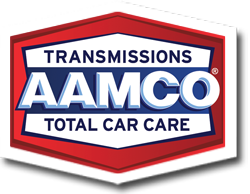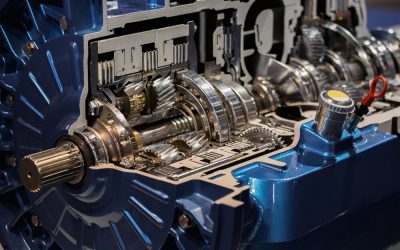In the past, vehicle transmissions were generally classified into two groups: manual and automatic. But now there’s a new type of transmission called a continuously variable transmission (CVT). This type of transmission has some distinctions that make it a good choice for some people, so if you’re considering purchasing a new vehicle, you may want to know more about CVTs. Here’s what you need to know.
How CVTs Work
A regular automatic transmission works by using different gears to transfer power from the engine to the wheels. You probably know that you change the gears with a manual transmission while an automatic transmission does it for you. A CVT is different because it actually doesn’t use any gears at all. Rather, it has one pulley that’s connected to the engine and another that sends power to the wheels. These pulleys are both connected to a belt. The width of the pulleys changes depending on how much power is needed, so if one gets larger, the other gets smaller. The power runs continuously between the two pulleys, allowing the transmission to work smoothly rather than shifting through individual gears.
When You Need Auto Repair, Go to the Best
Our technicians have helped repair and maintain millions of vehicles; this tradition of excellent service has earned us our reputation as the best transmission service experts in the country.
Seamless Acceleration
The seamless acceleration of gears with a CVT is a major part of what differentiates it from regular automatic transmissions. This smooth shifting makes it easier to go up hills smoothly or downshift on the downhill without the obvious change in gears or gear searching that’s common with other types of transmissions.

Power vs. Fuel Efficiency
For many years, the discussion about CVTs has been about power versus fuel efficiency. Since a CVT runs continuously and changes gears seamlessly, the engine continues running at peak efficiency. That makes it more gas efficient than regular transmissions. Some argue that the function of a CVT means that less power is available, which makes it not as applicable to sports cars. While this may have been the case in the past, newer vehicles are adding features and designs to a CVT that result in a good compromise between the two.
Typical CVT Vehicles
Cars equipped with a CVT are generally 4-cylinder vehicles such as sedans and some sport utility vehicles. This is because they get the most power possible out of a smaller engine, resulting in more responsive acceleration. They’re often used in hybrid cars as well to boost gas efficiency even more. More vehicles are being manufactured that offer this transmission because of the seamless drivability, but especially because of the significant fuel savings.
CVT Advantages
In addition to the fuel savings, there are other advantages of CVTs to consider as well. The entire transmission is quite a bit smaller and lightweight than a standard transmission, so it’s a good choice when limited space is an issue in a vehicle. These transmissions are also a simpler style compared to standard automatic transmissions, so they’re easier and quicker to assemble and fewer resources are used in the manufacturing.
AAMCO Can Help Your With All Your CVT Repair Needs
It’s important to note that not all transmission shops are equipped to do CVT transmission repair. As with a standard transmission, if you notice any jerking, slipping, shuddering, or sudden loss of power, it’s important to have the transmission looked at right away. The belt can wear out and need to be replaced, so if you suspect this is the case, be sure to look up “CVT repair near me” instead of just general transmission repair. If you notice signs of transmission trouble, call AAMCO Transmission & Total Car Care today at (330) 729-9980.
Interesting Facts You Never Knew About Your Car’s Transmission
For many drivers, you just care about getting easily and safely from one place to the next. You may not pay much attention to the inner workings of your car’s systems. However, there are a few key systems that help ensure you’re able to get from point A to point B...
read moreWhy the Best Transmission Repair Experts in Ohio Have a Nationwide Warranty
Finding the right mechanic for your next transmission repair can be harder than it should be. If you’re wondering how to best prioritize services and characteristics to choose the right transmission shop, we’re here with a suggestion: look for a nationwide warranty....
read moreHow a Single Missed Oil Change Can Impact Your Vehicle Health
Car Maintenance is a simple fact of car ownership – but how much of a difference does it really make for the health of your car? It turns out, that skipping an oil change service can have an impact on your car’s engine, as well as other essential systems in your car....
read more



